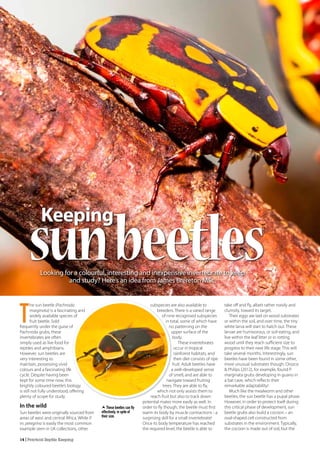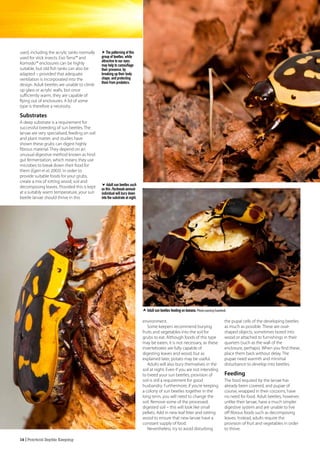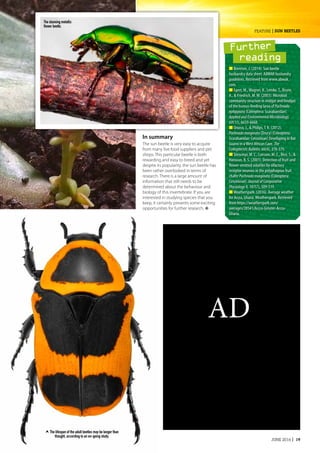The document discusses the sun beetle (Pachnoda marginata), an interesting beetle species that is commonly kept as live food but also has fascinating biology. It has vivid colors and an incompletely understood life cycle involving larvae that eat soil and wood debris. While they are widely available, there is still much to learn about their breeding, behaviors, and environmental needs to ensure their optimal care in captivity. The document provides housing and care recommendations based on current knowledge.





